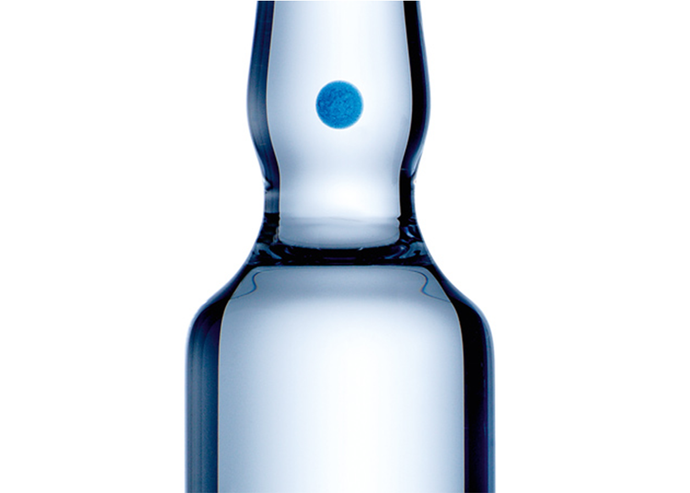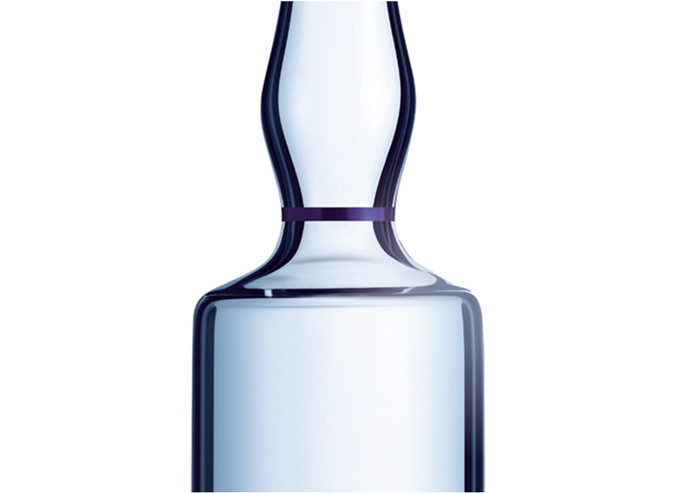
How to choose the best break-system for your ampoule?
In the evolving landscape of pharmaceutical packaging, ampoules have undergone significant advancements since their inception. Initially, ampoules were adapted to manual filling machines and later on to semi-automated and fully automated systems. Alongside changes in their physical design, there was a notable shift in how healthcare professionals accessed the medication inside. Until the 1980s, they would use knives or metal files to separate the neck from the ampoule’s body, risking injury from sharp glass edges and a high load of glass particles.
But over the past three decades, manufacturers have developed a variety of break-systems to enhance the safety of opening ampoules. In 1991, the International Organization for Standardization (ISO) introduced norm 9187-1, which standardized the breaking force required to open a glass ampoule for the Color Break Ring (CBR) and Scoring (SCO) systems.
In 1993, norm 9187-2 was published, specifically addressing One-Point-Cut (OPC) ampoules. Adopted by almost 100% of the market, OPC is the leading break-system that holds 62% of the global market share, followed by CBR at 32%, and SCO at 4%.
In the upcoming sections, we will explore the unique advantages of each system to help you make an informed decision about your specific ampoule requirements.
One-Point-Cut (OPC): the world’s most popular break-system

OPC ampoule
Despite being one of the newer break-systems, OPC has rapidly become the most widely used system in the EMEA region, China, and the rest of Asia. The term OPC indicates a precise incision made on the neck of the ampoule using a cutting disk before annealing. This cut is not made all around the ampoule’s circumference; instead, it resembles notches on a chocolate bar, allowing the glass ampoule to be opened at a specific point. To indicate the location of the incision, a painted dot is applied on the ampoule bulb directly over the cut.
OPC offers a number of advantages, including:
- Meets the ISO 9187-2 standard with specific breaking force values based on volume.
- Narrower breakforce range than ISO 9187-1 for greater precision.
- More consistent breakforce, reducing outliers compared to Scoring and CBR.
- No risk of ceramic particle loss during opening since there is no paint on the constriction.
- Research shows lower particle release; proper technique reduces release by up to 60%.
Customers can choose dot colors for effective identification during the production process. - Environmentally friendly: most OPC ampoules are REACH-compliant since they don’t apply heavy metal enamels for breakage induction, enhancing eco-friendliness.
To learn the proper technique for safely opening an OPC ampoule, please click here.
Given all these factors, the OPC break-system is strongly recommended for pharmaceutical companies aiming to eliminate the risk of difficult-to-open ampoules. This system guarantees straightforward and secure administration while reducing market complaints.
easyOPC: SCHOTT Pharma’s innovative solution for safer and easier ampoule opening.

easyOPC ampoule
Despite the introduction of OPC, accessing the medical solution inside an ampoule isn’t always painless. A 2018 survey of 700 European nurses conducted by SCHOTT Pharma revealed that over 85% encountered difficulties with ampoule handling, leading to frequent breakages. From a healthcare perspective, opening ampoules remains the primary cause of hospital injuries.
To address the challenge of hard-to-open ampoules and the associated risk of injury, SCHOTT Pharma developed easyOPC ampoules. Through meticulous optimization of the converting process and break-system application, SCHOTT Pharma has achieved a narrower breakforce range and tightened specifications for cosmetic defects. This has significantly reduced the Acceptable Quality Level (AQL) from 400 ppm to 50 ppm within a product lot, enhancing the safety and usability of ampoules in medical settings.
Externally, easyOPC ampoules maintain an identical appearance to OPC ampoules. Given their identical features, there is no necessity to re-register a new break-system when transitioning from OPC to easyOPC. Moreover, easyOPC ampoules offer the same benefits as OPC ampoules but go one step further:
- easyOPC provides a breakforce that is tighter than the specifications outlined in ISO 9187-2 (consequently, it is lower than ISO 9187-1).
- easyOPC offers a more consistent breakforce compared to OPC, resulting in fewer instances of breakforce outliers.
- easyOPC reduces injuries at the point of use while breaking ampoules.
- easyOPC simplifies ampoule opening, saving crucial seconds in emergency situations while using the same technique as OPC.
easyOPC is highly recommended for pharmaceutical companies looking to adopt the latest ampoule innovation, and is especially beneficial for eliminating unbreakable ampoules and addressing market complaints about wide breakforce ranges or injuries during opening. Adopting easyOPC ensures a safer and more efficient experience for both professionals and patients.
Scoring: traditional opening system with higher consistency.

Scoring ampoule
As one of the oldest break-systems in the ampoule portfolio, Scoring is defined by a cut made by a cutting disk applied 360 ° around the constriction of the ampoule. Unlike other systems, Scoring ampoules do not require a specific opening technique. However, if you want to learn the proper technique for safely opening a SCO (Scoring) ampoule, please click here.
Some of the benefits of Scoring ampoules include:
- 360° cut, reducing unbreakable ampoules risk.
- Meets ISO 9187-1 standard for breakforce.
- Offers improved breakforce consistency compared to CBR system.
- It is environmentally friendly, avoiding heavy metal enamels for breakage induction, enhancing eco-friendliness.
- No ceramic particle loss risk during opening.
Color Break Ring: traditional opening system that’s easier to use.

CBR ampoule
One of the oldest ampoule break-systems, CBR features an enamel ring encircling the ampoule’s constriction. This enamel, whether lead-containing or heavy metal-free (HMF), create microfractures during annealing, allowing the ampoule to open.
It’s worth noting that regulations in many countries now prohibit lead-containing enamels, a trend that’s expanding globally. However, ROHS-compliant enamels might not always achieve the same breakforce, which can pose a challenge.
In addition, the presence of enamels in the constriction increases the risk of ceramic particle loss during ampoule opening.
Similar to Scoring, there is no specific opening technique for CBR ampoules. However, if you want to learn the proper technique for safely opening a CBR (Color Break Ring) ampoule, please click here.
While CBR’s breakforce meets ISO 9187-1, its consistency is inferior than Scoring due to the absence of a cut in the constriction.

Victoria de la Torre
Global Product Manager ampoules
Register for the latest news
Stay up-to-date with information about SCHOTT Pharma products and services and register for our newsletter.




